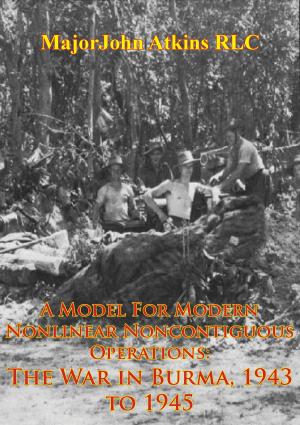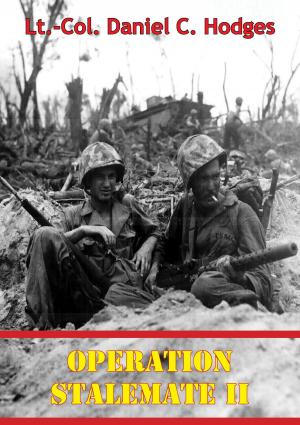August Storm: The Soviet 1945 Strategic Offensive In Manchuria [Illustrated Edition]
Nonfiction, History, Germany, European General, Military, United States| Author: | Colonel David M Glantz | ISBN: | 9781786250421 |
| Publisher: | Verdun Press | Publication: | November 6, 2015 |
| Imprint: | Verdun Press | Language: | English |
| Author: | Colonel David M Glantz |
| ISBN: | 9781786250421 |
| Publisher: | Verdun Press |
| Publication: | November 6, 2015 |
| Imprint: | Verdun Press |
| Language: | English |
[Includes 15 tables, 1 tables, 26 maps]
In August 1945, only three months after the rumble of gunfire had subsided in Europe, Soviet armies launched massive attacks on Japanese forces in Manchuria. In a lightning campaign that lasted but ten days, Soviet forces ruptured Japanese defenses on a 4,000-kilometer front, paralyzed Japanese command and control, and plunged through 450 kilometers of forbidding terrain into the heartland of Manchuria. Effective Soviet cover and deception masked the scale of offensive preparations and produced strategic surprise. Imaginative tailoring of units to terrain, flexible combat formations, and bold maneuvers by armor-heavy, task-organized forward detachments and mobile groups produced operational and tactical surprise and, ultimately, rapid and total Soviet victory.
For the Soviet Army, the Manchurian offensive was a true postgraduate combat exercise. The Soviets had to display all the operational and tactical techniques they had learned in four years of bitter fighting in the west. Though the offensive culminated an education, it also emerged as a clear case study of how a nation successfully begins a war in a race against the clock arid not only against an enemy, but also against hindering terrain.
Soviet military historians and theorists have recently focused on the Manchurian offensive, a theater case study characterized by deep mobile operations on a broad front designed to pre-empt and overcome defenses. Because these characteristics appear relevant to current theater operations, the Soviets study the more prominent operational and tactical techniques used in Manchuria in 1945. What is of obvious interest to the Soviet military professional should be of interest to the U.S. officer as well.
[Includes 15 tables, 1 tables, 26 maps]
In August 1945, only three months after the rumble of gunfire had subsided in Europe, Soviet armies launched massive attacks on Japanese forces in Manchuria. In a lightning campaign that lasted but ten days, Soviet forces ruptured Japanese defenses on a 4,000-kilometer front, paralyzed Japanese command and control, and plunged through 450 kilometers of forbidding terrain into the heartland of Manchuria. Effective Soviet cover and deception masked the scale of offensive preparations and produced strategic surprise. Imaginative tailoring of units to terrain, flexible combat formations, and bold maneuvers by armor-heavy, task-organized forward detachments and mobile groups produced operational and tactical surprise and, ultimately, rapid and total Soviet victory.
For the Soviet Army, the Manchurian offensive was a true postgraduate combat exercise. The Soviets had to display all the operational and tactical techniques they had learned in four years of bitter fighting in the west. Though the offensive culminated an education, it also emerged as a clear case study of how a nation successfully begins a war in a race against the clock arid not only against an enemy, but also against hindering terrain.
Soviet military historians and theorists have recently focused on the Manchurian offensive, a theater case study characterized by deep mobile operations on a broad front designed to pre-empt and overcome defenses. Because these characteristics appear relevant to current theater operations, the Soviets study the more prominent operational and tactical techniques used in Manchuria in 1945. What is of obvious interest to the Soviet military professional should be of interest to the U.S. officer as well.
![Cover of the book August Storm: The Soviet 1945 Strategic Offensive In Manchuria [Illustrated Edition] by Colonel David M Glantz, Verdun Press](https://www.kuoky.com/images/2015/november/500x500/9781786250421-4LMz_500x.jpg)



![Cover of the book Stalingrad To Berlin - The German Defeat In The East [Illustrated Edition] by Colonel David M Glantz](https://www.kuoky.com/images/2014/august/300x300/9781782893202-n4Nr_300x.jpg)










